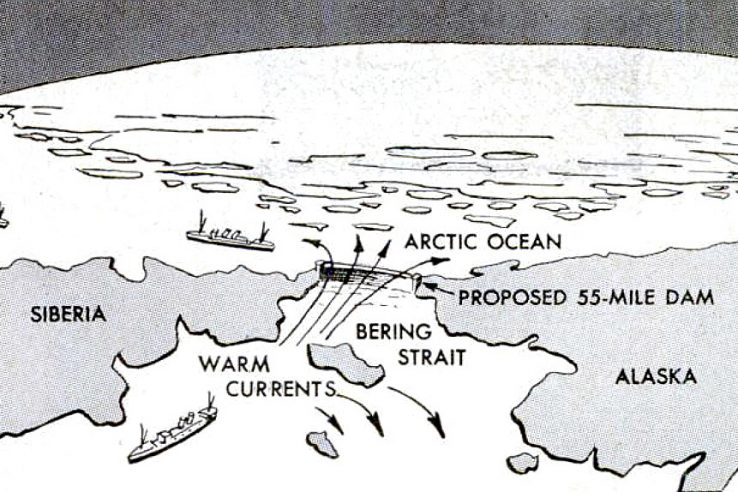These days, we worry the Arctic is getting too hot. Half a century ago, the Soviets wished it was warmer — and they thought of a way to thaw the frigid North.
Popular Mechanics reported in June 1956 that Soviet authorities were considering building a 55-mile dam between Alaska and Siberia. The barrier would keep icebergs and arctic currents out of the Pacific, allowing warm southern currents to sweep unchecked up the eastern shore of Siberia and down the western coast of North America. Warm water from the Pacific Ocean would be pumped back into the Arctic and transform the once-frozen region into a “blossoming landscape”.
American experts consulted by Popular Mechanics cautioned that such a dam would be enormously expensive and that the Soviets might have publicized the possibility of building it only for propaganda purposes.
There was something to that. The Soviet Union was always keen to broadcast its technological prowess to the world. But the plan to dam the Bering Strait was real.
Its mastermind was Petr Mikhailovich Borisov, a scientist determined to battle Russia’s oldest economy: the cold.
Today, more than 60 percent of Russia is still buried under permafrost, including most of oil- and gas-producing Siberia.
In addition, the Northern Sea Route — which otherwise would be the fastest way to ship goods between Asia and Europe — is inaccessible for most of the year. Only recently, thanks to global warming, has it become viable to route container ships along the north of Russia.
Borisov’s plan had a major “but”. It would mean reversing the flow of water in the Arctic Ocean — with global consequences. As a Dutchman, whose home is situated below sea level, I can’t say I would have been too thrilled about this…






